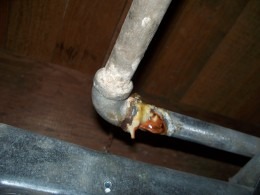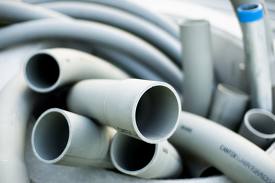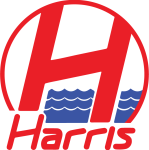Electrolysis is responsible for a small percentage of water line breaks in NYC each year but it does play a role. Electrolysis is defined as “a method of using a direct electric current (DC) to drive an otherwise non-spontaneous chemical reaction. Electrolysis is commercially highly important as a stage in the separation of elements from naturally occurring sources”. DC current is commonly used in train systems and electrical utilities which may play a factor in a water line break, pending the location of the piping.
What causes electrolysis on your water main?
 Electrolysis may occur when a direct current electrical leak takes place underground, often when two dissimilar metals come in contact with each other. Electrolysis on copper pipes is especially common. A good example is if you have had a repair on your main water line and the plumber used a new brass pipe to connect to the existing galvanized pipe, this may cause electrolysis resulting in a damaged water line.
Electrolysis may occur when a direct current electrical leak takes place underground, often when two dissimilar metals come in contact with each other. Electrolysis on copper pipes is especially common. A good example is if you have had a repair on your main water line and the plumber used a new brass pipe to connect to the existing galvanized pipe, this may cause electrolysis resulting in a damaged water line.
How do you know if electrolysis has occurred on your water line?
 “k” copper is prone to carrying electric current where an old lead water main is not, this causes a problem for homeowners as they may not be aware of a pre-existing electrolysis issue and may first become aware upon installing a new copper water main.
“k” copper is prone to carrying electric current where an old lead water main is not, this causes a problem for homeowners as they may not be aware of a pre-existing electrolysis issue and may first become aware upon installing a new copper water main.
Some signs of electrolysis in water pipes are an abnormal odor, green tinted staining on the pipe and random corrosion which one may not become aware of as the piping is located below ground level. Electrolysis is most common for homeowners who live in an area that have train tracks or a train trestle running above their home. The best way to become aware of an electrolysis issue is to ask your neighbors or contact a licensed water main & sewer contractor who may be aware of these types of issues in specific areas.
How can you amend the problem?
 Plastic piping can be used to prevent electrolysis from occurring on your water line. The waterline will be inserted through a clear plastic pipe in addition to a special insulating wrap which will protect portions of the main that may still be exposed.
Plastic piping can be used to prevent electrolysis from occurring on your water line. The waterline will be inserted through a clear plastic pipe in addition to a special insulating wrap which will protect portions of the main that may still be exposed.
The Process of Electrolysis
Courtesy of Wikipedia
The key process of electrolysis is the interchange of atoms and ions by the removal or addition of electrons from the external circuit. The required products of electrolysis are in some different physical state from the electrolyte and can be removed by some physical processes. For example, in the electrolysis of brine to produce hydrogen and chlorine, the products are gaseous. These gaseous products bubble from the electrolyte and are collected.
2 NaCl + 2 H2O → 2 NaOH + H2 + Cl2
A liquid containing mobile ions (electrolyte) is produced by:
Solvation or reaction of an ionic compound with a solvent (such as water) to produce mobile ions An ionic compound is melted (fused) by heating
An electrical potential is applied across a pair of electrodes immersed in the electrolyte.
Each electrode attracts ions that are of the opposite charge. Positively charged ions (cations) move towards the electron-providing (negative) cathode, whereas negatively charged ions (anions) move towards the positive anode.
At the electrodes, electrons are absorbed or released by the atoms and ions. Those atoms that gain or lose electrons to become charged ions pass into the electrolyte. Those ions that gain or lose electrons to become uncharged atoms separate from the electrolyte. The formation of uncharged atoms from ions is called discharging.
The energy required to cause the ions to migrate to the electrodes, and the energy to cause the change in ionic state, is provided by the external source of electrical potential.




















